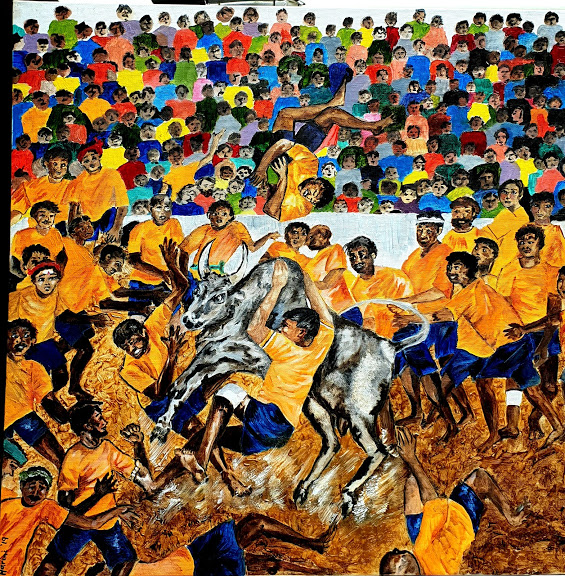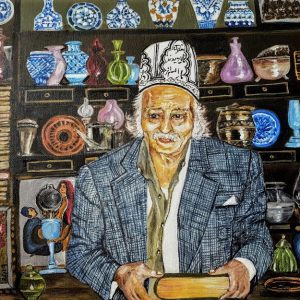18. The Running of the Bull, Tamil Nadu, India
An ancient traditional event, Jallikattu ,has been known to be practiced ever since the Tamil classical period (400-100 BCE) in Tamil Nadu, Southern India. Ancient Tamil Sangam sculptures and literature describe it as ‘bull embracing’ Specially reared Kanyagam bulls (Bos indicus), are released into a crowd of people, and several male participants attempt to grab the large hump on the bull’s back with both arms. The contestant should apparently hand on to the bull for 15-20 metres or three jumps of the bull or for a specified period of time without losing grip or being thrown off.
There are several references in ancient in Dravidian literature where the winner of Jallikattu gets to marry the daughter of the village head. Even in modern times there are many instances of young women falling in love with those who could tame the bulls.
The bull is never harmed in any way in Jallikattu though the brave men attempting to grab its hump can sustain occasional injury. Typically, participants must only hold onto the bull’s hump, they can be they are disqualified if they hold onto the bull’s neck, horns or tail. If the contestant is thrown by the bull or falls, he loses.
The modern term jallikattu or sallikattu is derived from salli (‘coins’) and kattu (‘package’), which refers to a prize of coins that are tied to the bull’s horns and that a team of seven to nine players attempt to retrieve it within the maximum time period allowed which is 30 minutes.
Bulls are bred specifically by people of the village for the event. Bulls that are able to participate successfully in the jallikattu event are used as studs for breeding and fetch high prices in the markets.
I sat behind a double barricade in the stalls at one such Jallikattu event in the temple city of Madurai in South India. The excitement was enormous, the noise of the crowds deafening.
I was sure that serious casualties would result from the hugely insane way the men were tossed up by the bull or appeared to be gored, Amazingly, but for superficial lacerations, most participants were unhurt. I was told that there were occasions where more injuries resulted from collapsing stalls when the frenzied leaping up and down by the crowds cheering their teams got too enthusiastic!
Original: Oil on canvas ; 12 x 16″ (305 x 410mm); framed
Limited Edition Print : Available as Giclee print on finest quality paper or canvas. International shipment
Sizes available: 8 x 12″(203 x 305 mm); 12 x 16″(305 x 410mm); 18 x 24″(457 x 610 mm); 24 x 32″ (610 x 813mm)
For list of prices, details of paper or canvas and pigments used, please get in touch via contact form
Will post rolled up in a tube with Certificate of Authenticity, number of the print and artist’s signature.



